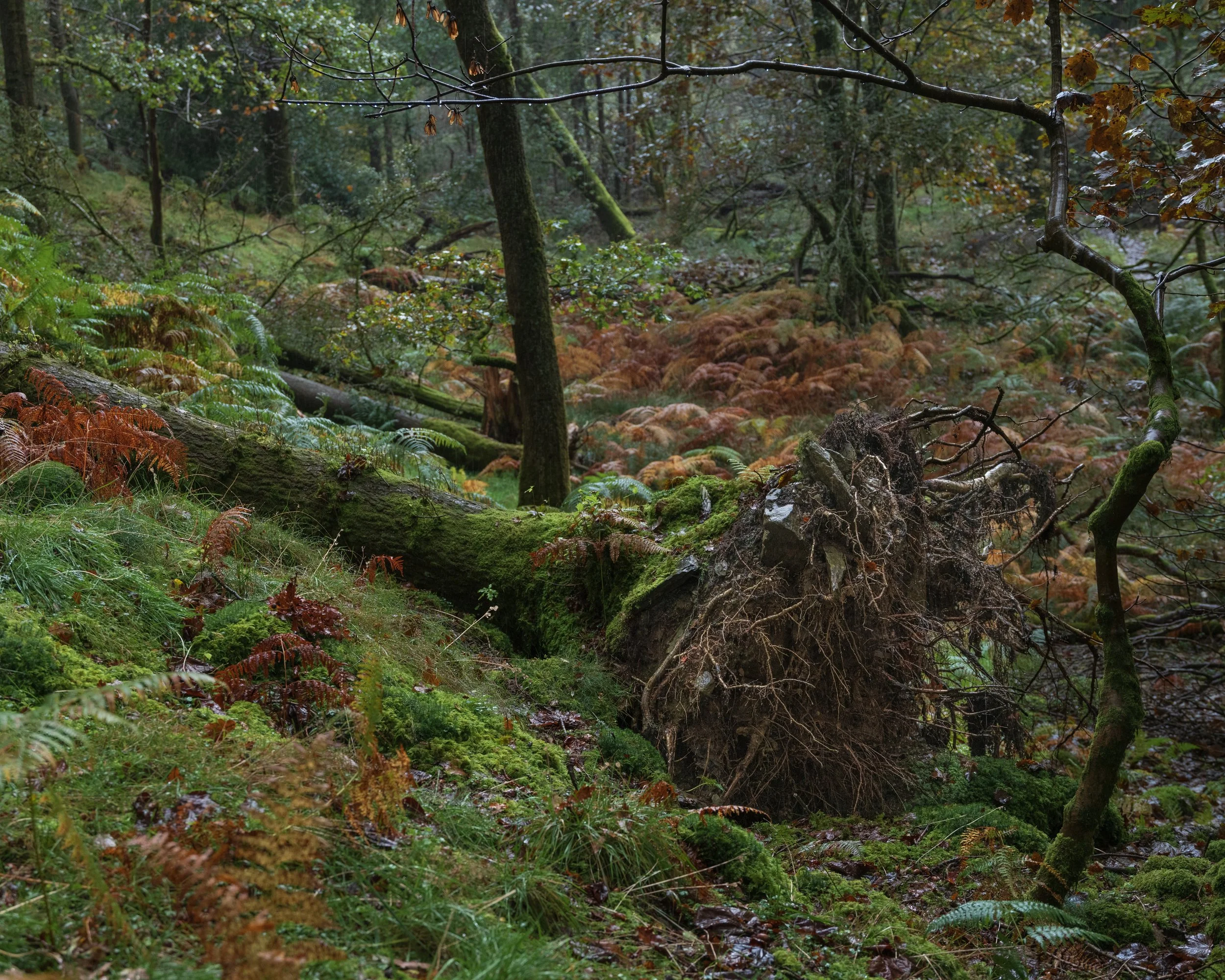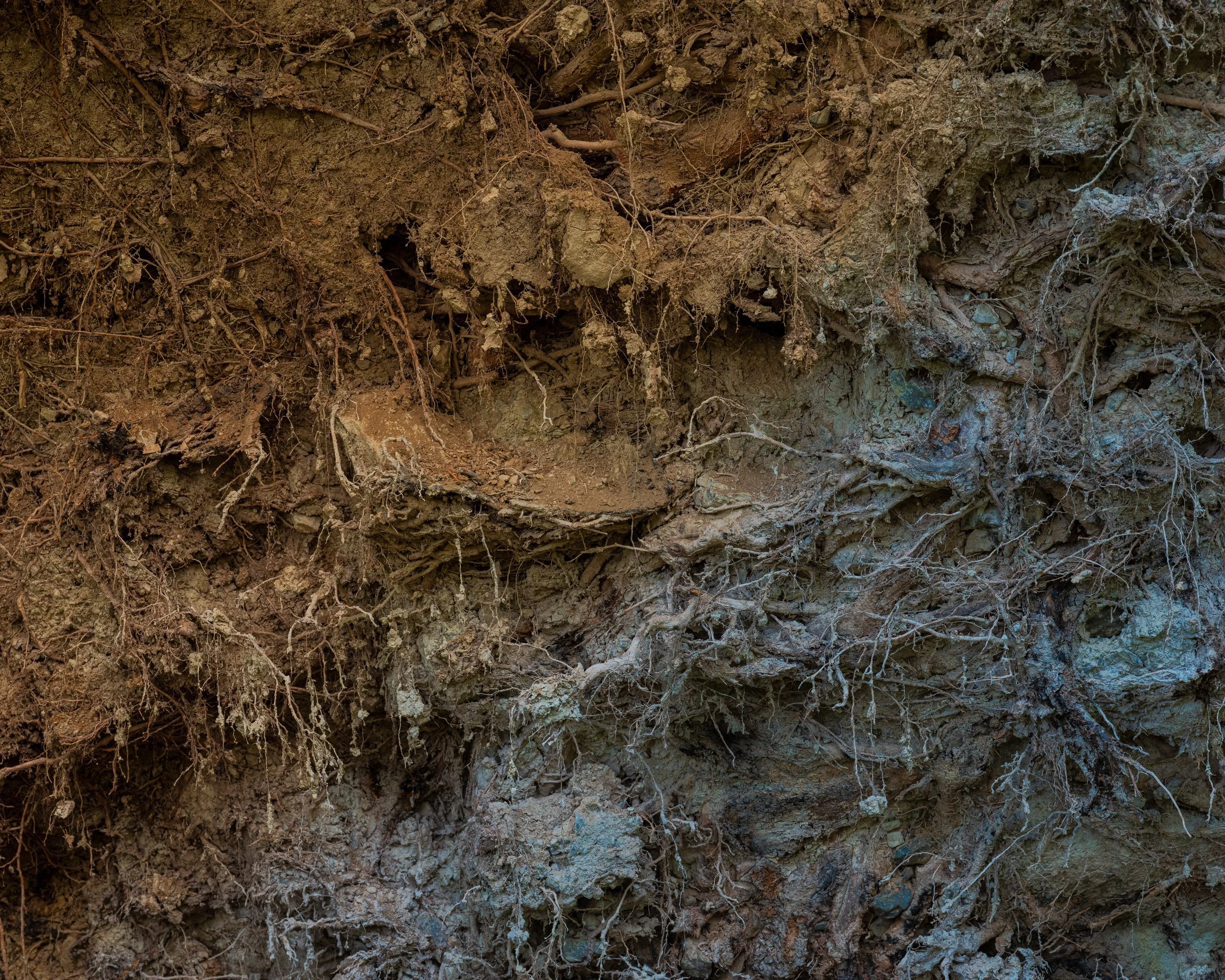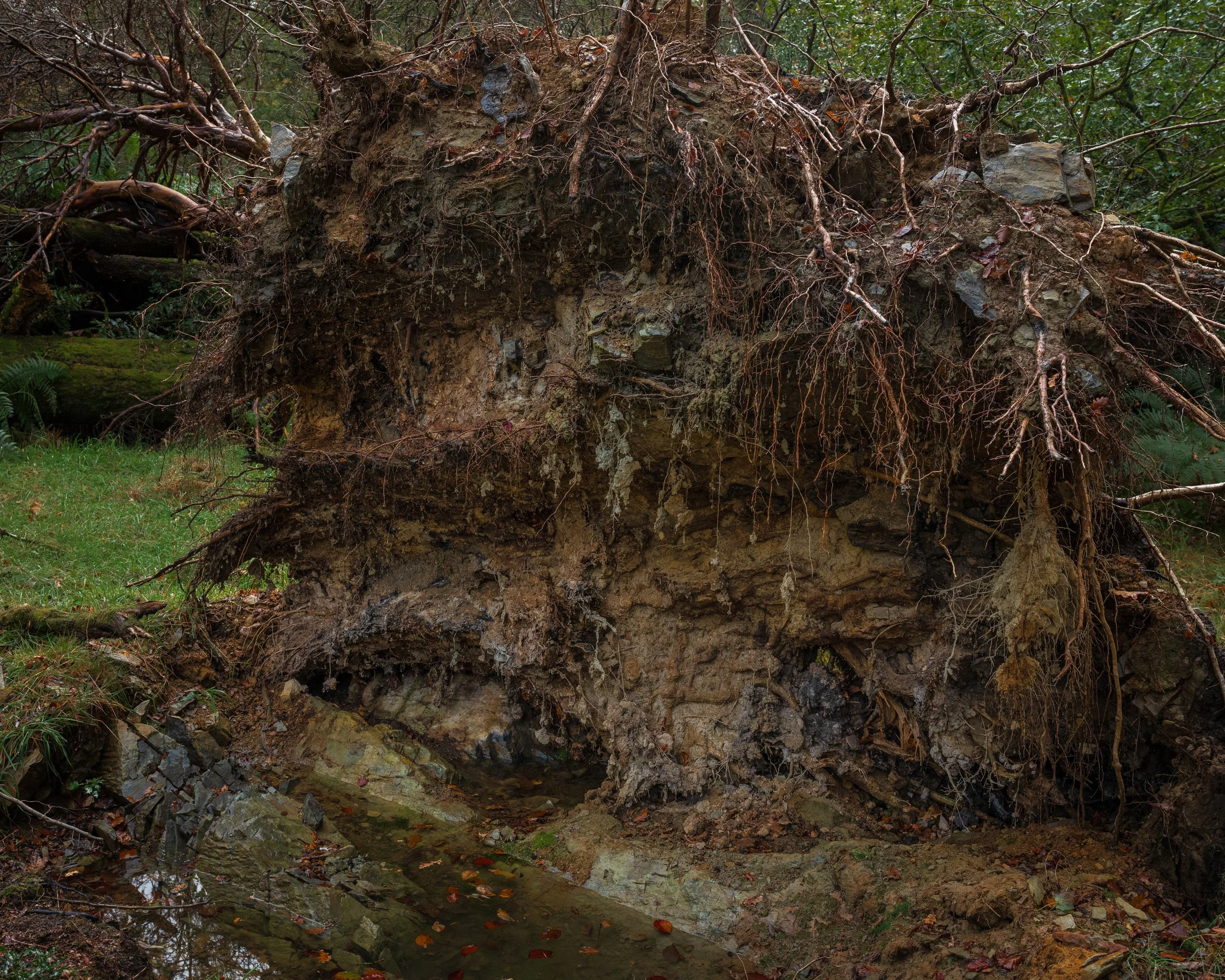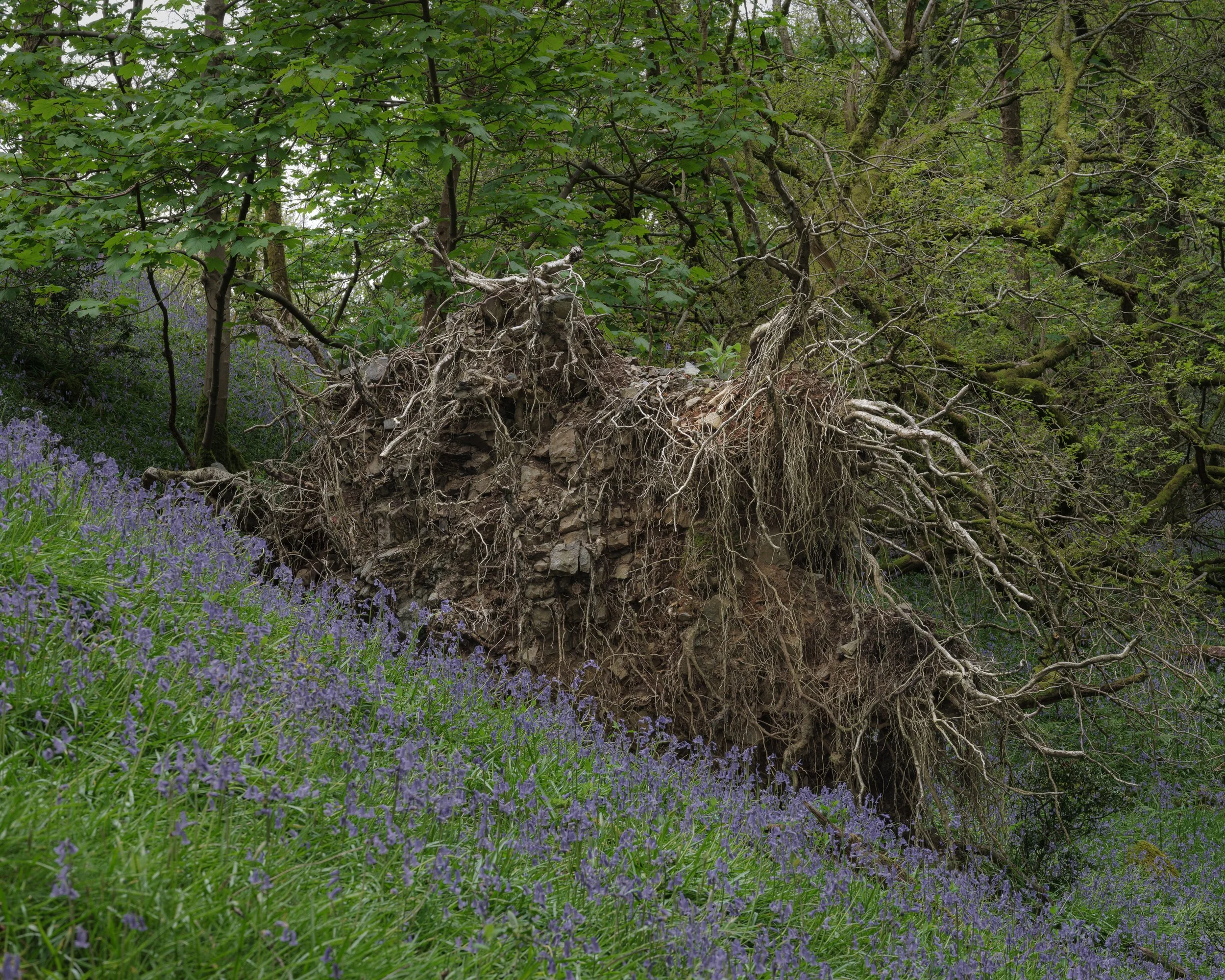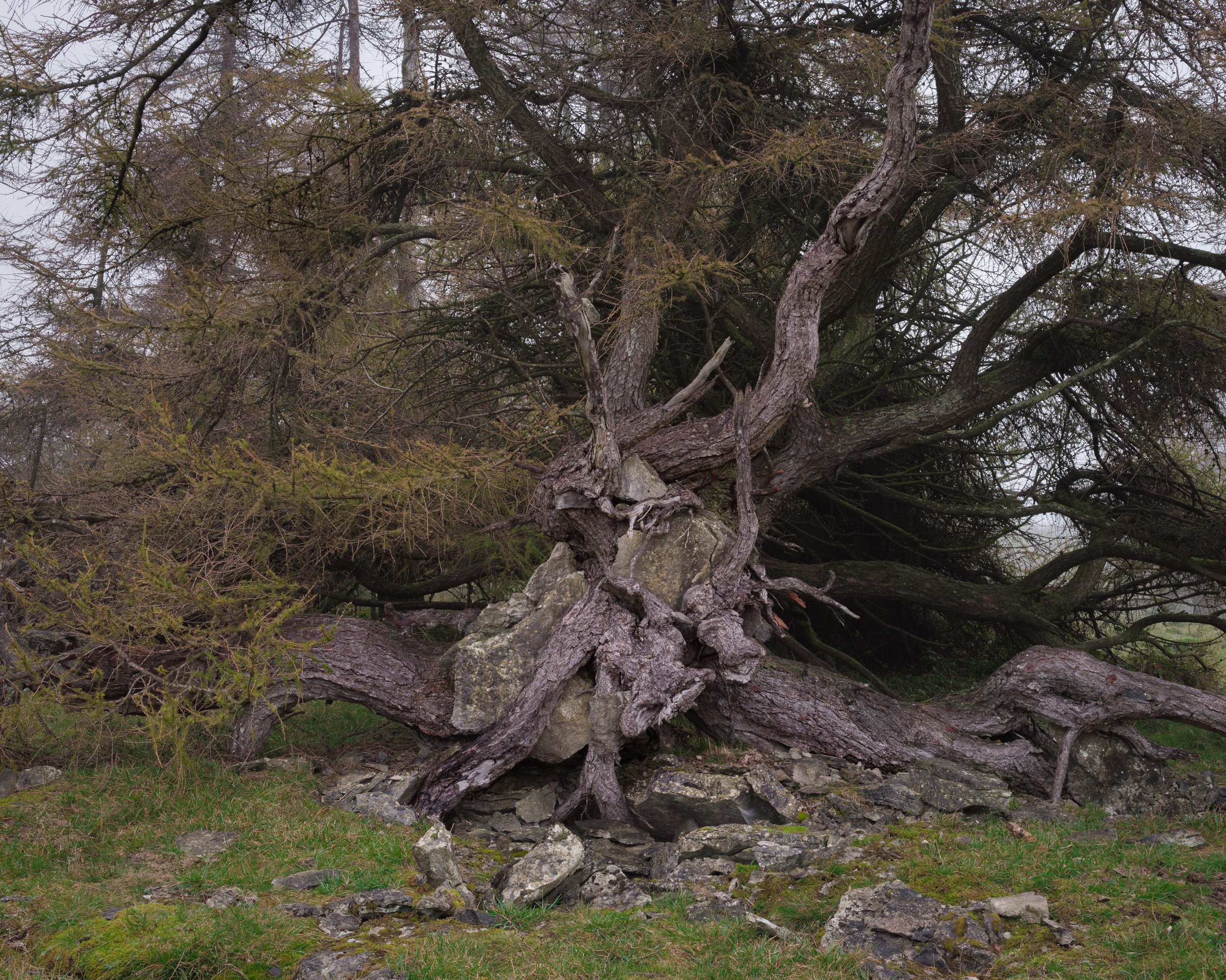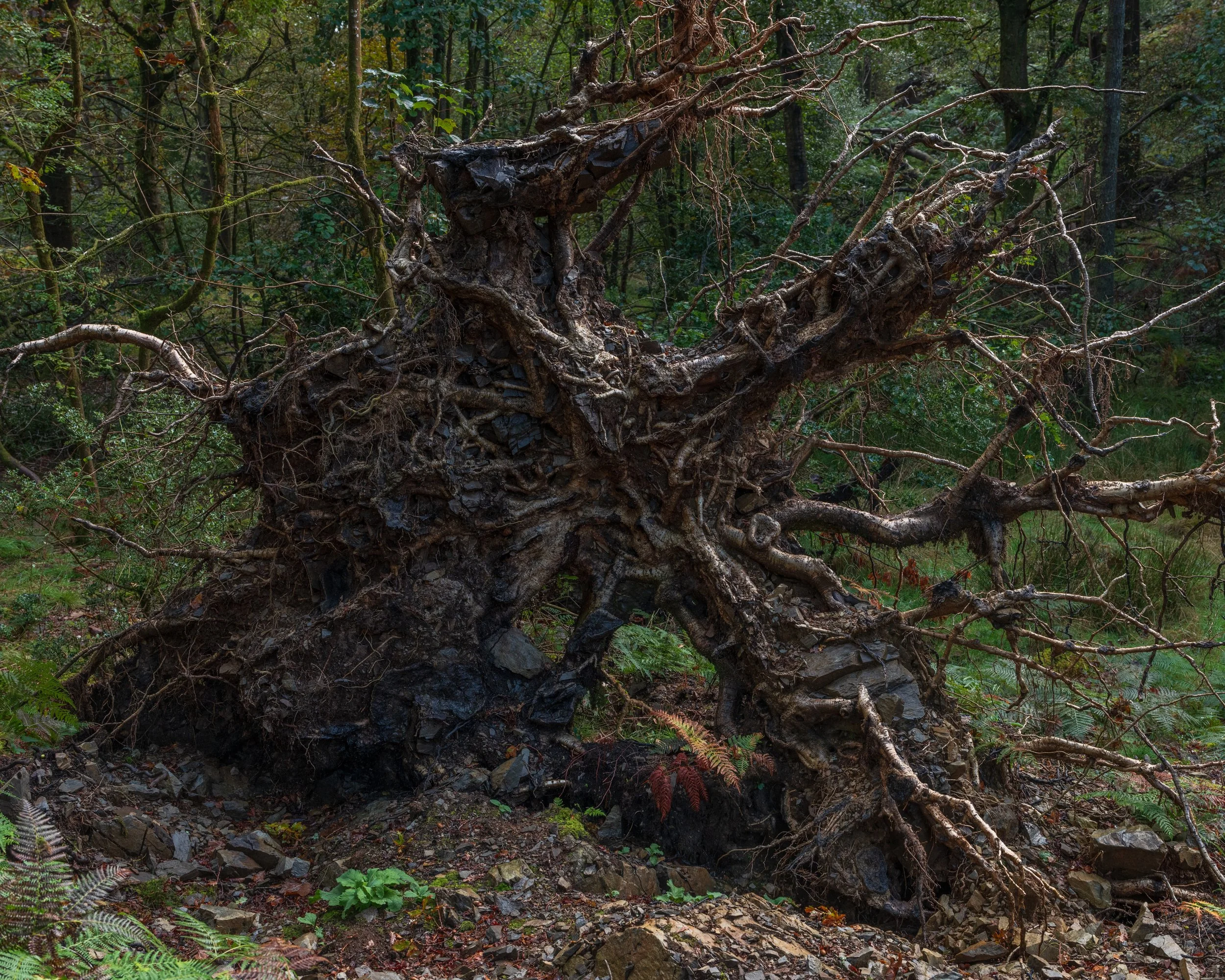
Windthrow
As morning broke on 27th Nov 2021 the catastrophic impact of what had happened overnight was revealed. The storm, named Arwen was an extratropical cyclone that generated powerful winds from an unusual direction devastating large swathes of the British landscape. I find the word Windthrow disturbing - a term used by arborists to describe the natural event of a tree being uprooted or displaced by wind. As I investigated my own local woodland after the storm I found mature trees ripped from rock and earth. I have always found the sight of a newly fallen tree unsettling and a little jarring but the scale of this event was arresting. The bare and newly exposed root systems presented like open wounds in the landscape.
The root systems of neighbouring trees are in fact intertwined and growing together. These root systems form a Mycorrhizal fungal association - a mutualistic relationship where the fungus grows in the root and provides the root with nutrients and water collected from the surrounding soil. The fungi provide a messaging service to the trees and in return receive the produce of photosynthesis from the tree.
16 million trees were brought down across northern England and southern Scotland that night. As I continue to visit these uprooted trees my intrigue in the traumatised subterreanean world that has been revealed has led to a series of photographs that attempt to document the lasting mark on the landscape of windthrow events. The wonder of revisiting these locations is that often the tree continues to live, illustrating their utter resilience in the face of major trauma. It is fascinating to observe the formation of new micro habitats as a small piece of the subterranean world is exposed to sunlight and weather.





